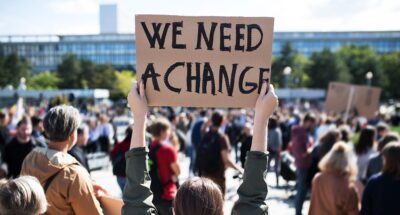
Courageous and Compassionate Citizens
Students brainstorm a current moral or civic issue facing society and explore how to use courage to address it.

Students brainstorm a current moral or civic issue facing society and explore how to use courage to address it.
Students will:
Tell students:
Optional Adjustments for Younger Students
Tell students:
Tell students:
Tell students:
Tell students:
Tell students:
Tell students:
Research tells us that models of courage can motivate us to act with moral courage ourselves, creating a positive spiral of courageous action. For example, in two studies of over 360 American adults, researchers found that when people viewed superhero images they reported greater helping intentions and behaviors afterwards, compared to participants who weren’t shown heroic images.
In another study, 62 fourth- and fifth-graders from Michigan participated in a program that taught students about courage and heroism while asking them to see themselves as heroes. They reported greater courage immediately after the program—and even one month later.
Sharing stories of courage, discussing barriers to courageous action, seeing oneself as courageous, and collectively working towards courageous problem solving can all contribute to greater prosocial action.
It takes courage to stand up to injustices, like bullying or racial discrimination. Strengthening students’ courage muscles can lead to more prosocial classrooms, while potentially enhancing students’ well-being, their ability to cope with stressors, and even their academic engagement and success.

Are you ready to build a kinder, happier school where everyone belongs? Join Greater Good Educators! Explore the science of well-being in a supportive community of educators from around the world. Registration is now open for the 2025-2026 school year!
Comments